Data integration is the process of merging data from various sources to create a unified view. Its significance lies in improving decision-making, enhancing data accessibility, and supporting analytics initiatives. This blog provides an in-depth exploration of data integration, covering its definition, historical context, processes, tools, benefits, challenges, and future trends. By understanding the essence of data integration, readers can grasp its pivotal role in modern data-driven environments.
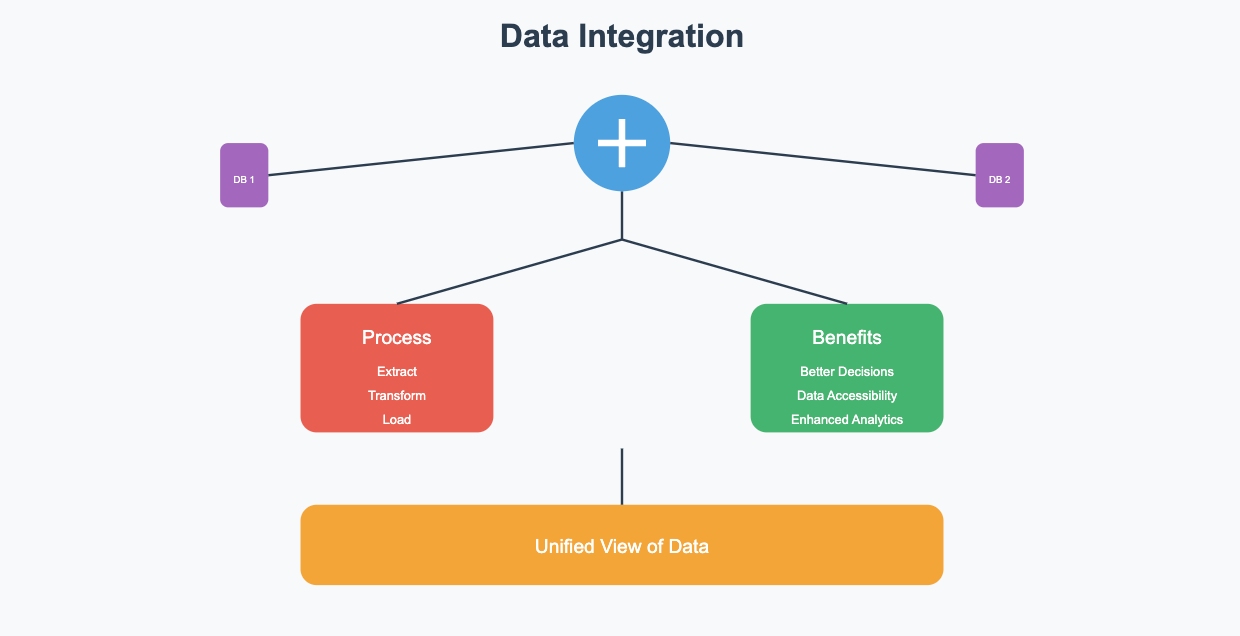
What is Data Integration?
Definition of Data Integration
Data integration is the process of combining data from different sources to provide a unified view or to enable comprehensive analysis. The technical perspective delves into the intricate mechanisms involved in merging data from diverse sources.
In recent years, cloud-based integration platforms like AWS Glue and Azure Data Factory have become pivotal for real-time data analytics, offering seamless scalability and reduced infrastructure management. These platforms not only support data from traditional databases but also integrate unstructured data sources, such as social media or sensor data, enabling businesses to analyze complex data streams in real time. Furthermore, modern architectures like Data Mesh and Data Fabric are gaining traction for their ability to decentralize data management, promoting domain-oriented ownership and providing more agility in data access and integration across large organizations.
This process, often facilitated by cutting-edge software tools, ensures that information flows seamlessly across systems. In the e-commerce industry, companies use data integration to combine customer data from various touchpoints (website, mobile app, CRM systems) to deliver personalized shopping experiences and targeted marketing campaigns. Additionally, financial institutionsintegrate data from multiple sources such as transaction systems, external financial reports, and market data to provide better risk management and fraud detection capabilities.

On the other hand, from a business standpoint, data integration embodies the harmonization of disparate datasets to create a unified and coherent narrative for organizational decision-making.
Historical Context of Data Integration
The historical context of data integration reflects the evolution of technology and business needs over several decades. This history is marked by key developments that have shaped how organizations manage and utilize data today.
1960s-1970s: The Mainframe Era
- Data Silos: During this period, data was primarily stored on mainframes, with each application having its database. This led to the creation of data silos, where data was isolated and difficult to share across different systems.
- Batch Processing: Data processing was typically done in batch jobs, where data was processed in large groups at scheduled times, rather than in real-time.
1980s: Emergence of Relational Databases and ETL
- Relational Databases (RDBMS): The introduction of relational database management systems (RDBMS), such as IBM's DB2, Oracle, and Microsoft SQL Server, allowed for more efficient data storage and retrieval using SQL.
- ETL Processes: The concept of Extract, Transform, Load (ETL) emerged, enabling organizations to extract data from multiple sources, transform it into a consistent format, and load it into a central repository for reporting and analysis.
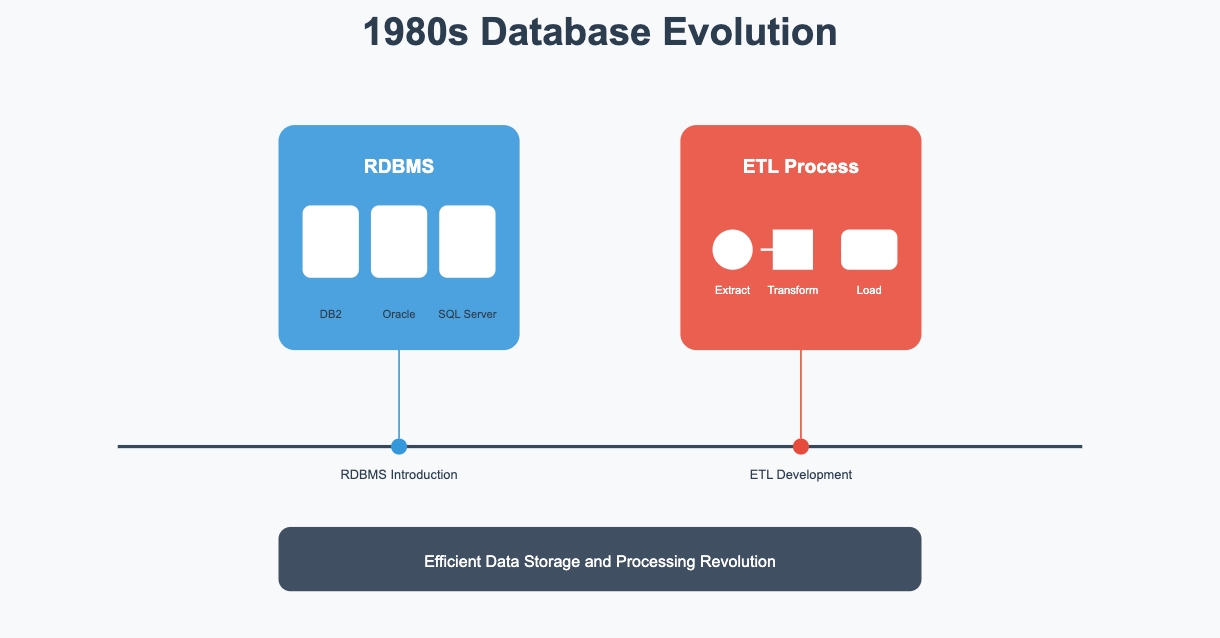
1990s: Data Warehousing and Business Intelligence
- Data Warehouses: The 1990s saw the rise of data warehousing. Companies like Teradata and Informatica popularized the idea of collecting data from various sources into a centralized data warehouse. This enabled more complex queries and analytics.
- Business Intelligence (BI): BI tools such as Cognos, BusinessObjects, and MicroStrategy became popular, allowing businesses to analyze their integrated data and generate insights for decision-making.
- OLAP (Online Analytical Processing): OLAP technologies enabled multi-dimensional analysis of data, providing capabilities for complex calculations, trend analysis, and data modeling.
2000s: Expansion and New Technologies
- Enterprise Data Integration: Companies like IBM, Oracle, and Microsoft expanded their data integration tools, offering more robust ETL solutions and data integration platforms.
- Data Lakes: The concept of data lakes emerged, particularly with the rise of big data technologies. Data lakes allowed organizations to store vast amounts of raw, unstructured, and semi-structured data in its native format.
- Real-time Data Integration: Technologies like Apache Kafka and real-time ETL tools enabled real-time data streaming and processing, allowing businesses to react more quickly to changing data.
2010s: Big Data and Cloud Integration
- Big Data Technologies: The rise of big data technologies like Hadoop, Spark, and NoSQL databases (e.g., MongoDB, Cassandra) provided new ways to store, process, and integrate massive amounts of diverse data.
- Cloud Computing: Cloud platforms like AWS, Google Cloud, and Microsoft Azure offered scalable storage and processing power, making data integration more accessible and cost-effective. Cloud-based data integration tools like AWS Glue, Azure Data Factory, and Google Cloud Dataflow gained popularity.
- Data Virtualization: Data virtualization technologies allowed organizations to create virtual views of data from multiple sources without physically moving the data, simplifying access and integration.
2020s: Advanced Integration and AI
- AI and Machine Learning: Advanced analytics and machine learning are increasingly integrated into data integration platforms, providing more intelligent data transformation, anomaly detection, and predictive analytics.
- Data Fabric and Data Mesh: New architectural approaches like data fabric and data mesh emerged, focusing on decentralized data management and integration strategies, emphasizing data as a product and domain-oriented ownership.
- API-Driven Integration: The proliferation of APIs and microservices architecture enhanced real-time data integration capabilities, enabling seamless connectivity between diverse systems and applications.
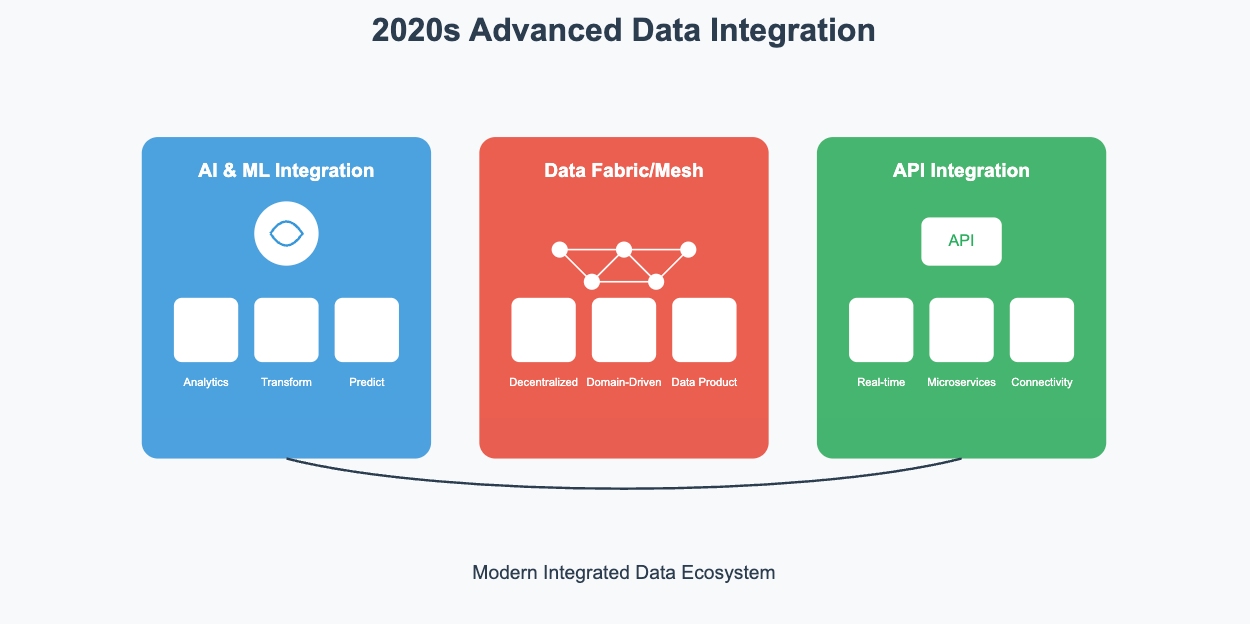
Current Relevance of Data Integration
The evolution of data integration reflects the ongoing advancements in technology and the increasing complexity of business data needs. From the early days of isolated data silos and batch processing to the sophisticated, real-time, and AI-driven integration solutions of today, data integration has become a critical component of modern data management strategies. This evolution has enabled organizations to harness the full potential of their data, driving better insights, efficiency, and innovation.
In contemporary times, data integration stands as a linchpin in driving operational efficiency and informed decision-making across industries. Modern applications harness its power to synchronize information streams from multiple sources, fostering a cohesive ecosystem for analysis and interpretation. For instance, in healthcare, data integration plays a crucial role in unifying patient records from disparate systems to enhance care coordination and clinical outcomes.
Processes of Data Integration
Data integration involves several key processes that work together to combine data from various sources into a unified, consistent, and accessible format. These processes ensure that the integrated data is accurate, reliable, and useful for analysis, reporting, and decision-making. Here are the primary processes of data integration:
Data Ingestion
Effective data integration begins with the meticulous process of data collection. Businesses employ various methods to gather information from disparate sources, ensuring a comprehensive dataset for analysis and decision-making. The diverse data sources utilized range from structured databases to unstructured sources like social media feeds and IoT devices. By amalgamating these varied inputs, organizations can derive valuable insights and drive strategic initiatives.
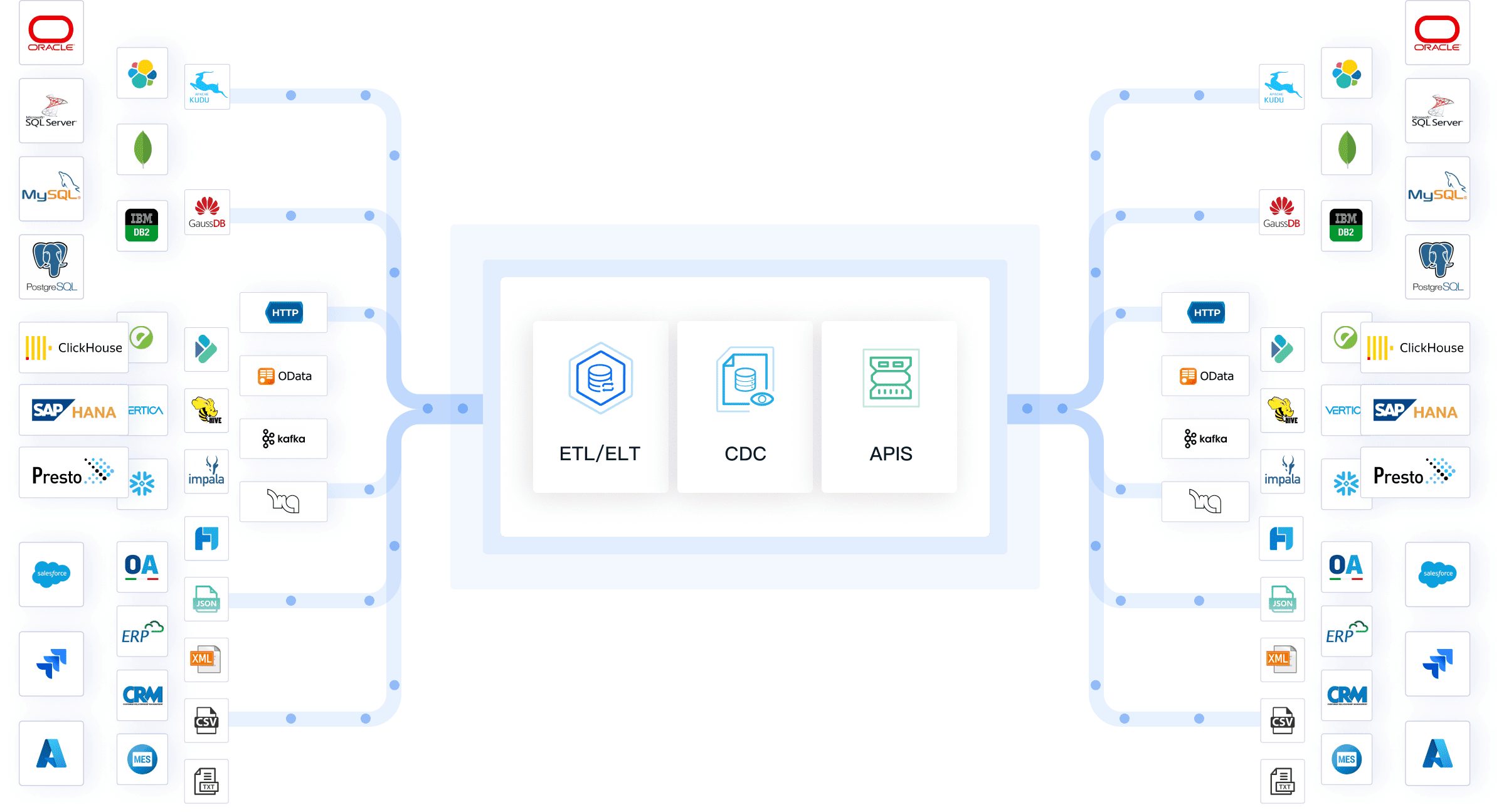
Data Transformation
The subsequent phase in the data integration journey involves data mapping, a critical process that establishes relationships between different datasets. This step lays the foundation for aligning information across systems, enabling seamless data flow and interoperability. Additionally, data cleansing plays a pivotal role in enhancing data quality by identifying and rectifying inconsistencies or errors within the datasets. Through meticulous transformation processes, businesses ensure that their integrated data is accurate, reliable, and conducive to informed decision-making.
For example, a leading retail company utilized machine learning algorithms during the data transformation phase to automatically clean and categorize customer purchase data. This not only improved the accuracy of their product recommendations but also reduced the manual labor involved in data preprocessing by 40%. This illustrates the growing role of AI in data transformation, as it allows businesses to process large datasets more efficiently and derive actionable insights more quickly.
Data Consolidation
Once data has been ingested and transformed, the focus shifts towards combining data from various sources into a unified repository. This consolidation phase aims to create a cohesive dataset that provides a holistic view of organizational information. By merging disparate datasets and systems, businesses can generate actionable insights and facilitate cross-functional collaboration. Furthermore, the process of creating unified views enables stakeholders to access consolidated data effortlessly, fostering enhanced operational efficiency and strategic alignment.
Data Delivery
Data transfer methods
Organizations leverage diverse data transfer methods to ensure seamless communication between systems and facilitate the exchange of information. One prevalent approach involves utilizing Application Programming Interfaces (APIs) to establish connections and enable data transmission in a structured manner. Another common practice is employing File Transfer Protocols (FTPs) to securely move data files between different platforms or servers. Additionally, some enterprises opt for Web Services such as Representational State Transfer (REST) APIs for efficient data sharing across web applications.
Ensuring data quality
Upholding data quality standards is paramount in the realm of data integration, guaranteeing that information remains accurate, consistent, and reliable throughout the process. Businesses implement robust validation mechanisms to detect anomalies or discrepancies within datasets, ensuring that only high-quality data is integrated into their systems. Automated data cleansing tools play a pivotal role in identifying and rectifying errors, redundancies, or inconsistencies, thereby enhancing the overall integrity of integrated datasets. Regular audits and monitoring procedures are conducted to validate data accuracy and completeness, safeguarding against potential discrepancies or inaccuracies.
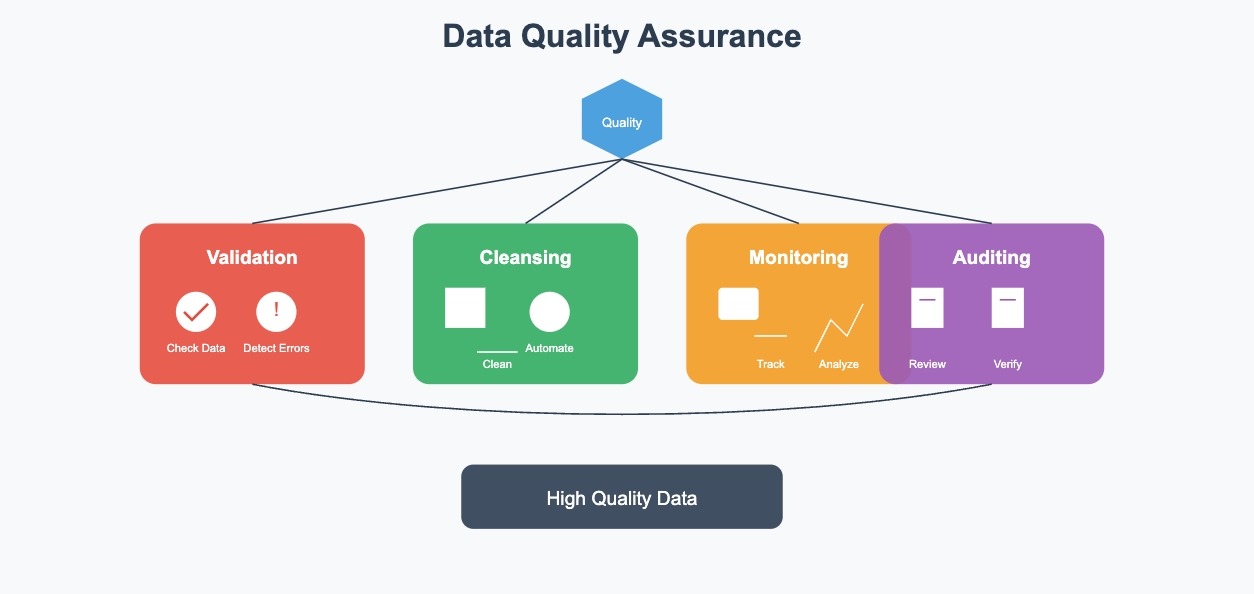
Benefits and Challenges of Data Integration
In today's data-driven world, the ability to effectively integrate data from various sources is crucial for organizations seeking to harness the full potential of their information assets. We'll then explore the benefits and challenges of data integration, highlighting how it can improve efficiency, enhance data quality, and provide competitive advantages, while also addressing the complexities and issues that organizations may face. Through understanding these aspects, you will gain insights into the strategic importance of data integration in modern business environments.
Benefits of Data Integration
1. Improved Decision Making
- Unified View: Integrating data from various sources provides a comprehensive view of the organization, enabling better-informed decisions.
- Real-Time Insights: Real-time data integration allows for immediate insights and faster response times to market changes or operational issues.
2. Increased Efficiency
- Reduced Redundancy: Streamlining data integration processes eliminates redundant data entry and storage, improving operational efficiency.
- Automation: Automated data integration reduces the manual effort required for data handling, freeing up resources for more strategic tasks.
3. Enhanced Data Quality
- Consistency: Ensures data consistency across different systems, reducing errors and improving data reliability.
- Data Cleansing: Integration processes often include data cleansing, which enhances the overall quality of the data.
4. Cost Savings
- Operational Efficiency: Improved efficiency and reduced manual labor translate into cost savings.
- Resource Optimization: Optimizes the use of IT resources and infrastructure by consolidating data storage and processing.
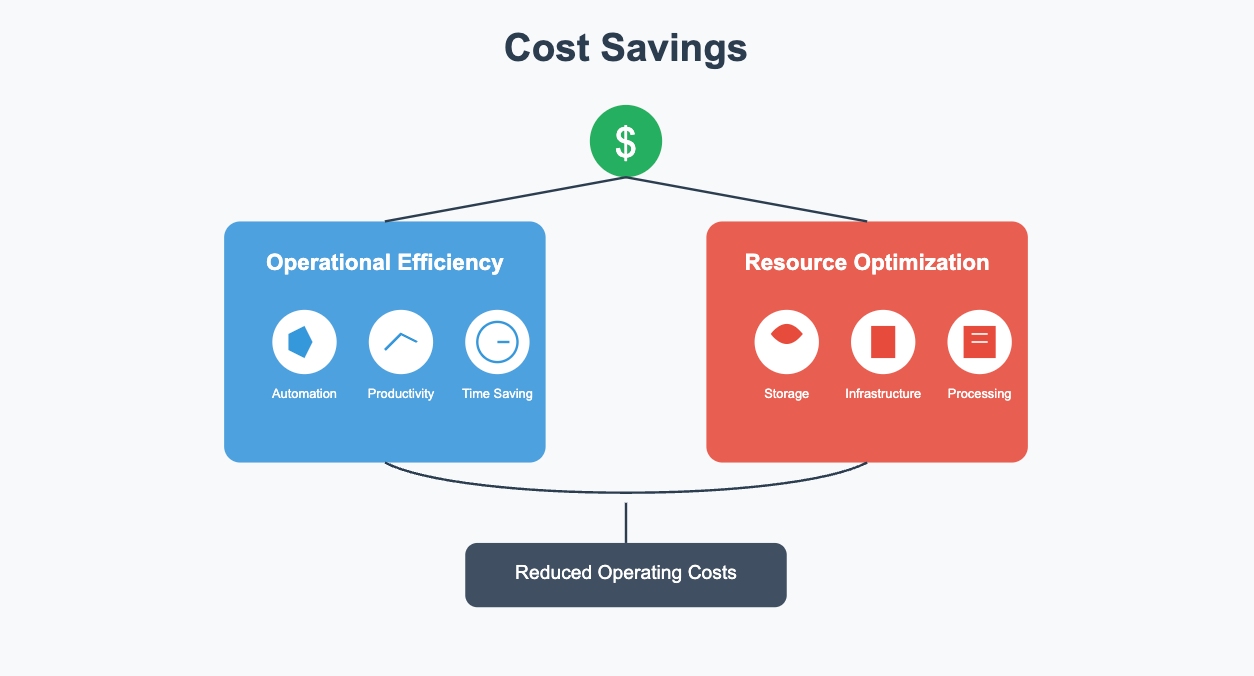
5. Better Customer Insights
- Comprehensive Analytics: Integrating customer data from various touchpoints provides deeper insights into customer behavior and preferences.
- Personalization: Enables more personalized marketing and customer service strategies based on integrated customer data.
6. Competitive Advantage
- Agility: Organizations that can quickly integrate and analyze data are more agile and can adapt faster to market changes.
- Innovation: Integrated data supports innovative business models and new revenue streams.
7. Enhanced Collaboration
- Data Sharing: Facilitates data sharing across departments and teams, fostering collaboration and alignment.
- Unified Data Access: Provides a single source of truth that all stakeholders can access and trust.

Challenges of Data Integration
1. Data Quality Issues
- Inconsistencies: Data from different sources may have inconsistencies that need to be resolved during integration.
- Accuracy: Ensuring the accuracy and reliability of integrated data can be challenging, especially with legacy systems.
2. Complexity and Diversity of Data
- Multiple Formats: Integrating data from various formats (e.g., CSV, XML, JSON, databases) requires complex transformation processes.
- Heterogeneous Systems: Different systems may use different data models, making integration complex.
3. Scalability
- Handling Large Volumes: Integrating large volumes of data efficiently can be technically challenging and resource-intensive.
- Performance Optimization: Ensuring optimal performance during data integration tasks, especially in real-time scenarios.
4. Security and Privacy
- Data Protection: Ensuring the security and privacy of data during integration is critical, especially with sensitive or personal data.
- Compliance: Meeting regulatory requirements (e.g., GDPR, CCPA) during data integration processes.
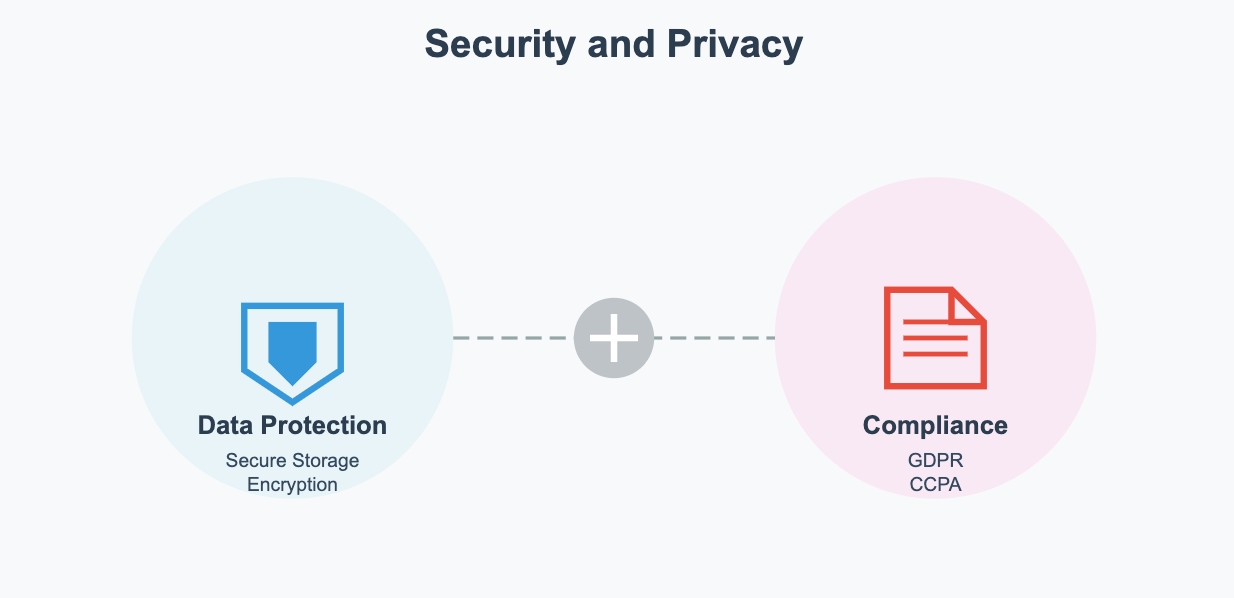
5. Cost and Resource Allocation
- Implementation Costs: The initial cost of setting up data integration solutions can be high.
- Maintenance: Ongoing maintenance and management of integrated data systems require skilled resources and can be costly.
6. Lack of Standardization
- Varied Data Standards: Different systems and departments may have their own data standards, making integration difficult.
- Data Governance: Establishing and maintaining data governance frameworks to ensure standardized and compliant data integration.
7. Real-Time Integration Challenges
- Latency: Ensuring minimal latency in real-time data integration to provide timely insights.
- Synchronization: Maintaining accurate synchronization between different systems in real-time.
8 Emerging Tools Addressing Data Integration Challenges
To address the challenges faced in data integration, modern tools are rapidly evolving, particularly in handling real-time data integration and ensuring data quality. For instance, Talend Data Fabric offers a robust integration platform for the financial sector, enabling seamless data flow across multiple sources and ensuring high-quality data through real-time synchronization and automated data cleansing. Additionally, Apache NiFi, an open-source tool, simplifies the data integration process by enabling stream-based processing across diverse systems, significantly reducing data latency and improving operational efficiency.
For example, a leading global bank utilized Talend Data Fabric to achieve real-time data synchronization across multiple data centers, which enhanced cross-platform decision-making capabilities and reduced financial risks associated with poor data quality.
This integration of emerging tools like Talend and Apache NiFi demonstrates how organizations can now address complex data integration challenges more effectively, ensuring better data accuracy, improved scalability, and faster decision-making.
Tools for Data Integration
Numerous tools are accessible for data integration, each crafted to tackle the aforementioned challenges presented by different facets of the integration process, spanning from extraction to transformation to loading. These tools differ in their functionalities, intended use cases, and complexity. Below are some of the most popular and widely-used data integration tools:

Software Tools
Popular tools
When it comes to data integration, several software tools have gained prominence for their robust capabilities and seamless functionalities. These tools serve as the backbone of data integration processes, enabling organizations to amalgamate data from disparate sources efficiently. Some popular software tools in this domain include:
FineDataLink: As a modern and scalable data integration solution, FinedataLink addresses the challenges of data integration, data quality, and data analytics through its three core functions: real-time data synchronization, ETL/ELT, and APIs.
Informatica PowerCenter: A tool known for its comprehensive data integration and transformation features.
Talend Data Fabric: Renowned for its open-source roots and user-friendly interface, making it a preferred choice for many businesses.
IBM InfoSphere DataStage: Recognized for its scalability and ability to handle complex data integration tasks.
Microsoft SQL Server Integration Services (SSIS): A versatile tool that seamlessly integrates with other Microsoft products, simplifying data integration workflows.
Features and capabilities
These software tools offer a myriad of features and capabilities that streamline the data integration process and enhance operational efficiency, let's take FineDataLink as an example:
Robust Connectivity: FineDataLink provides extensive connectivity options to various data sources, ensuring seamless data ingestion.

Efficient data warehouse construction: The low-code platform streamlines the migration of enterprise data to the data warehouse, relieving computational burdens.
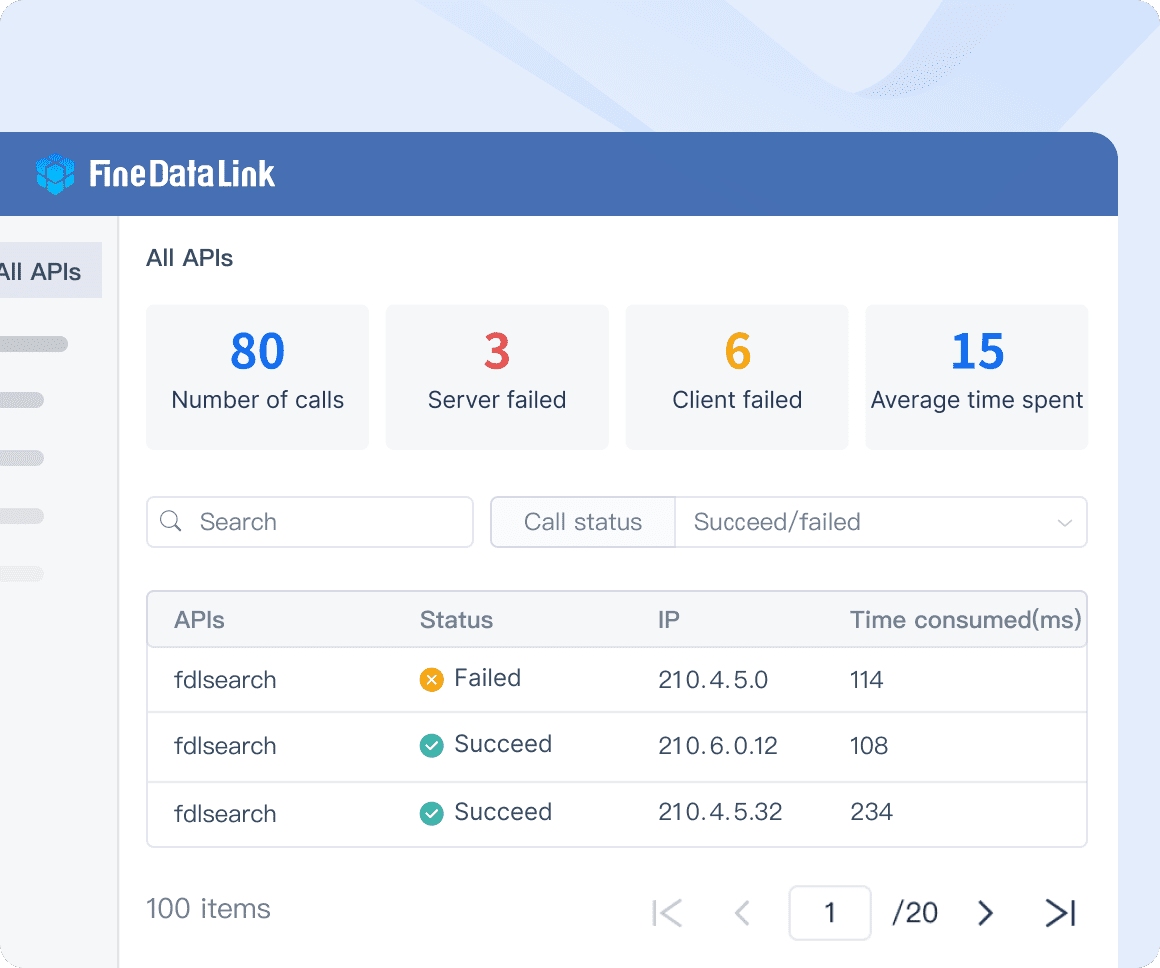
Data Transformation Capabilities: They offer advanced data transformation functionalities, facilitating the conversion of raw data into valuable insights.
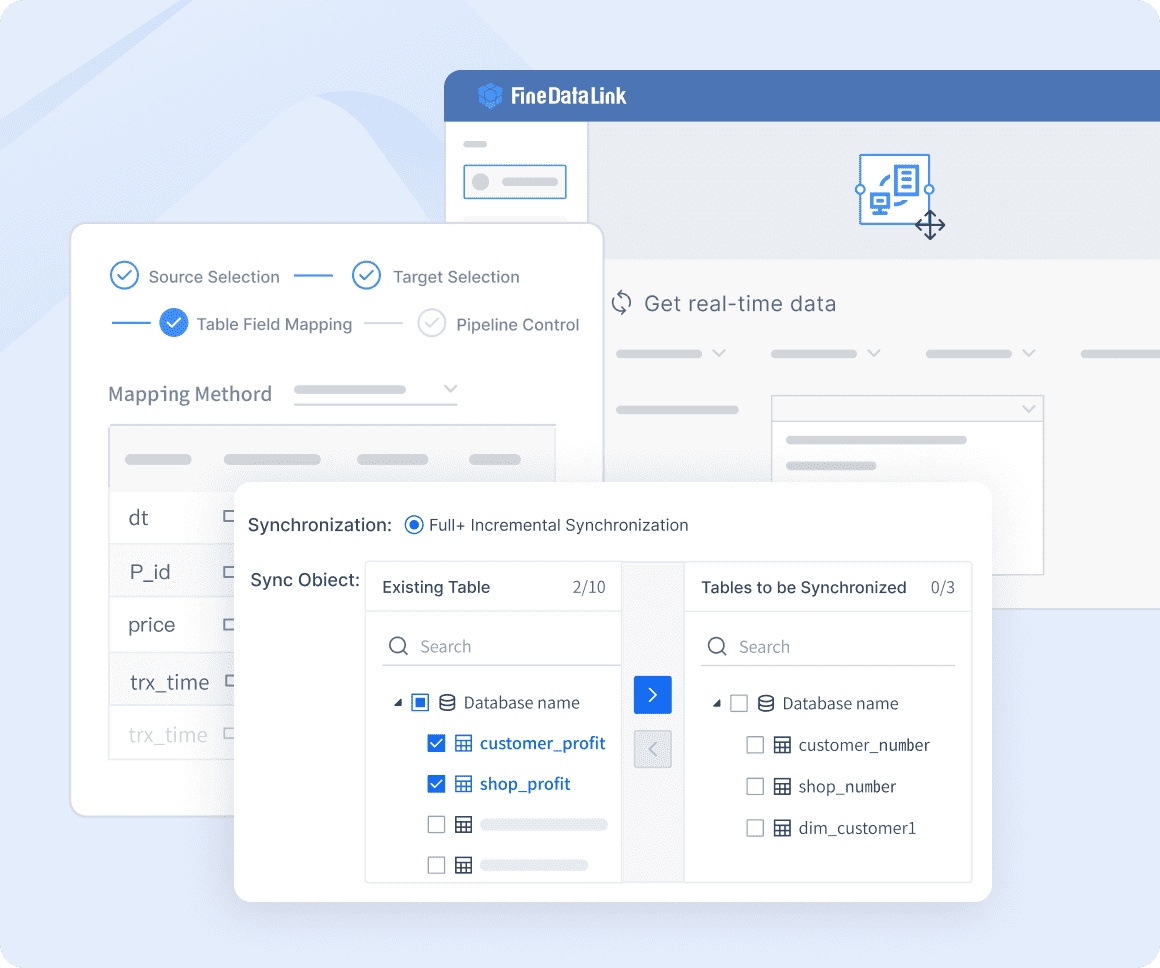
Application and API integration: Utilize API data accounting capabilities to cut interface development from 2 days to 5 minutes.
What can data integration tools offer?
Then, how can data integration tools like FineDataLink solve data integration challenges with its core features?
- Real-Time Data Synchronization: FineDataLink can synchronize data across multiple tables in real time with minimal latency, typically measured in milliseconds. This capability makes FineDataLink ideal for database migration and backup, as well as for building a real-time data warehouse.
- ETL/ELT: Timely data calculation and synchronization is one of FineDataLink's core functions. It can be used for data preprocessing and serves as an ETL tool for building data warehouses, ensuring that data is transformed and loaded efficiently.
- APIs: An API interface can be developed and launched in 5 minutes without writing code. This capability can be widely used to share data between different systems, especially SaaS applications, facilitating seamless data integration and exchange.

Cloud-based Tools
Advantages of cloud tools
Cloud-based data integration tools have revolutionized the way organizations approach data management by offering unparalleled advantages:
- Scalability: Cloud tools can scale dynamically based on demand, allowing businesses to adapt to changing needs swiftly.
- Cost-effectiveness: They eliminate the need for significant upfront investments in infrastructure, offering a pay-as-you-go model that optimizes costs.
- Accessibility: Cloud tools enable remote access to data integration processes, promoting collaboration among geographically dispersed teams.
- Security: Leading cloud providers implement robust security measures to safeguard sensitive data, ensuring compliance with industry regulations.

Examples of cloud tools
Several prominent cloud-based data integration tools have garnered acclaim for their innovative solutions and user-centric interfaces:
- Amazon Web Services (AWS) Glue: Known for its serverless ETL capabilities that simplify data integration tasks without managing infrastructure.
- Microsoft Azure Data Factory: Offers a scalable platform with diverse connectors for seamless data ingestion from various sources.
- Google Cloud Data Fusion: Empowers users with an intuitive visual interface for designing end-to-end data pipelines, enhancing productivity.
Open-source Tools
Benefits of open-source
Open-source data integration tools have emerged as compelling alternatives due to their inherent advantages:
- Flexibility: Open-source tools provide flexibility in customization and adaptation according to specific business requirements.
- Cost-efficiency: Organizations can leverage open-source solutions without incurring hefty licensing fees, optimizing overall expenditure.
- Community Support: The vibrant open-source community ensures continuous development and support, fostering innovation within the ecosystem.
Examples of open-source tools
Numerous open-source data integration tools have gained traction for their versatility and collaborative frameworks:
- Apache NiFi: A powerful tool known for its visual flow-based programming model that simplifies complex data routing scenarios.
- Talend Open Studio: Offers a comprehensive suite of ETL functionalities coupled with an intuitive design environment for seamless workflow creation.
- Pentaho Data Integration (Kettle): Renowned for its robust set of features encompassing extraction, transformation, and loading operations within a unified platform.
- By leveraging these diverse software solutions tailored to different organizational needs, businesses can embark on their data integration journey with confidence and efficiency.

Future Trends of Data Integration
Emerging Technologies
The landscape of data integration is poised for transformation through the adoption of emerging technologies. Innovations such as Artificial Intelligence (AI) and Machine Learning (ML) are revolutionizing how organizations approach data consolidation tasks. AI-driven algorithms enhance automation capabilities, optimize data mapping processes, and expedite decision-making by identifying correlations within vast datasets.
Predictions for Data Integration
Looking ahead, the realm of data integration is forecasted to witness substantial advancements driven by technological innovations and evolving business requirements. Predictive analytics tools are projected to play a pivotal role in forecasting trends, mitigating risks, and capitalizing on opportunities within dynamic market landscapes. Additionally, the proliferation of cloud-based solutions is expected to reshape traditional data integration paradigms by offering scalable platforms for seamless information exchange.
By embracing these future trends proactively and addressing current challenges adeptly, organizations can harness the full potential of data integration to drive growth, innovation, and competitive advantage in an increasingly digitized world.

Empowering organizations to make well-informed decisions, data integration greatly enhances data quality by identifying and rectifying errors and inconsistencies from multiple sources. This results in more reliable and accurate data, facilitating effective analysis and providing valuable insights. Moving forward, embracing emerging technologies like Artificial Intelligence (AI) and Machine Learning (ML) will revolutionize data consolidation tasks, optimizing processes and expediting decision-making for a competitive edge in the digital landscape.
In conclusion, by adhering to these guidelines for choosing and deploying data integration tools, alongside adopting best practices for data integration and management, businesses can effectively leverage the potential of these transformative solutions to address their evolving data requirements. Taking these factors into account, FineDataLink may prove to be your optimal solution.
FAQ
Q1: What is a data analysis framework, and why is it important?
A data analysis framework is a structured approach to analyzing data that defines the steps, methodologies, tools, and techniques used to gather insights from raw data. It provides a systematic way to approach data problems, ensuring consistency and reliability in analysis. A well-defined framework helps improve the accuracy and effectiveness of the analysis by guiding analysts through the correct processes, from data collection to interpretation. Examples of popular data analysis frameworks include CRISP-DM (Cross-Industry Standard Process for Data Mining) and the data science lifecycle.
Q2: What are the different types of data analysis frameworks, and how do they differ?
There are several types of data analysis frameworks, each serving different analytical purposes. Some of the most common include:
- Descriptive Analysis Framework: Focuses on summarizing historical data to identify patterns, trends, and relationships, often through charts and reports.
- Diagnostic Analysis Framework: Aims to understand why something happened by exploring the causes behind specific patterns observed in the data.
- Predictive Analysis Framework: Uses historical data to build models that predict future trends and behaviors, often utilizing machine learning techniques.
- Prescriptive Analysis Framework: Focuses on recommending actions based on data insights, aiming to optimize outcomes through decision-making models.
Each framework is suited to different stages of the data analysis process, and selecting the appropriate framework depends on the specific objectives of the analysis.
Q3: How can organizations leverage data analysis frameworks to improve their data analysis accuracy and effectiveness?
Organizations can improve data analysis accuracy and effectiveness by carefully selecting and applying the right framework for their objectives. For instance:
- Clear Objective Setting: A framework ensures that the data analysis process is aligned with the business goals, helping to focus on the most relevant data and avoid unnecessary analysis.
- Standardization and Best Practices: Frameworks bring structure to data analysis, making it easier to implement best practices and repeat successful approaches across different teams or departments.
- Automation: Some data analysis frameworks incorporate automation to handle repetitive tasks, such as data cleaning or model building, which reduces human error and speeds up the process.
- Continuous Improvement: By using a framework, organizations can continuously refine their analysis techniques, ensuring that insights remain accurate and relevant in a changing business environment.
Q4: How do data analysis frameworks contribute to decision-making in business?
Data analysis frameworks provide a systematic approach to gathering, processing, and interpreting data, making it easier for decision-makers to base their actions on evidence rather than intuition. These frameworks help to:
- Enhance Confidence in Decisions: Structured analysis backed by reliable frameworks leads to more informed decisions with a higher level of confidence.
- Ensure Consistency: Frameworks create a consistent approach to data analysis, which helps in making decisions based on standardized processes across different teams.
- Enable Data-Driven Strategies: Frameworks enable businesses to create data-driven strategies by offering a clear pathway from raw data to actionable insights.
Q5: What are some examples of industries that benefit from using data analysis frameworks?
Data analysis frameworks are widely used across various industries to enhance business outcomes:
- Healthcare: Frameworks help analyze patient data for improved care coordination, disease prediction, and treatment planning.
- Finance: Predictive and prescriptive analysis frameworks are used for risk assessment, fraud detection, and investment strategies.
- Retail: Descriptive and predictive frameworks help businesses understand customer behavior, forecast demand, and optimize inventory management.
- Manufacturing: Diagnostic frameworks are used to identify inefficiencies in production processes and improve operational workflows.
Key takeways:
- Data integration is essential for creating a unified view of information across different systems, enhancing decision-making and operational efficiency.
- Modern data integration tools leverage advanced technologies like AI, machine learning, and real-time processing to improve accuracy and scalability.
- Adopting structured data analysis frameworks enables organizations to optimize their analysis processes and make data-driven decisions with confidence.
Click the banner below to experience FineDataLink for free and empower your enterprise to convert data into productivity!
Continue Reading about Data Integration
Top Data Integration Tools: 2025 Guide
Top 10 Data Integration Software for 2025
What is API Data Integration? API vs Data Integration
Best Data Integration Platforms to Use in 2025
Enterprise Data Integration: A Comprehensive Guide

The Author
Howard
Data Management Engineer & Data Research Expert at FanRuan
Related Articles

10 Best Data Orchestration Tools for 2025 You Should Know
Compare the best data orchestration tools for 2025 to streamline workflows, boost automation, and improve data integration for your business.
Howard
Nov 28, 2025

10 Best Enterprise ETL Tools for Data Integration
Compare the 10 best enterprise ETL tools for data integration in 2025 to streamline workflows, boost analytics, and support scalable business growth.
Howard
Oct 02, 2025

What is Real Time Data Integration and Why It Matters
Real time data integration connects systems for instant, accurate data access, enabling faster decisions, improved efficiency, and better customer experiences.
Howard
Sep 24, 2025




